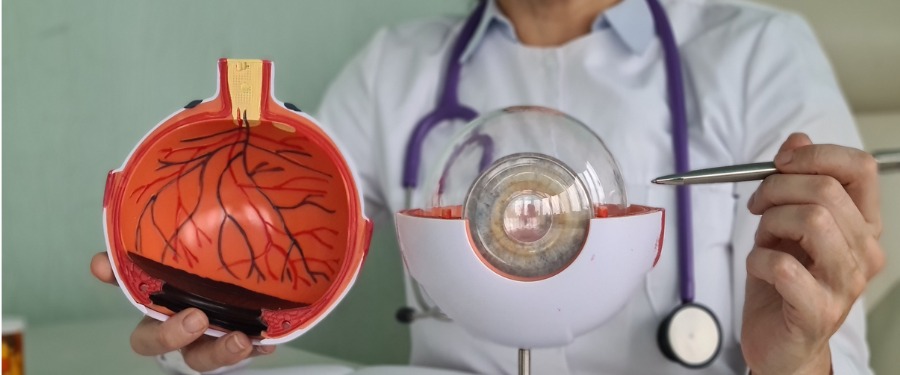What to know about persistent corneal epithelial defects

Persistent corneal epithelial defects are more than just an eye injury. The corneal epithelium is an integral part of the eye, tasked with guarding against infection and structural damage. While most injuries to the corneal epithelium are able to heal within a week, these persistent injuries will continue well past the seven-day mark. If they remain unresponsive to standard treatments, the condition is referred to as a persistent corneal epithelial defect.
Also called PEDs or PCEDs, these persistent injuries can leave the eye vulnerable to infection, perforation, scarring, and even vision loss. While treatments exist, they are not effective for every individual — and that is where clinical trials come in. Below, we will examine what things can cause persistent corneal epithelial defects, what their symptoms are, how they are treated, and how clinical trials may provide new solutions in the future.
What causes persistent corneal epithelial defects?
A variety of things can cause persistent corneal epithelial defects, ranging from light damage to diseases that impact the eyes. A few of the most common causes include:
Physical trauma, which refers to an injury of the eye caused by something physical, such as a fingernail, contact lens, or chemical exposure.
Eye-impacting diseases, such as those that cause incomplete eyelid closure, restrict an individual’s eyelid movement, or cause chronic dry eyes.
Light damage, that can be a result of prolonged sun exposure, extensive exposure to reflective surfaces, or welding without proper protection.
To prevent persistent corneal epithelial defects, it is important to wear protective eyewear such as sunglasses and safety glasses, and also practice good hygiene habits before touching the eyes or contacts.
What are the symptoms of persistent corneal epithelial defects?
Symptoms of persistent corneal epithelial defects typically include pain, increased tear production, and the feeling of a foreign body in the affected eye. It can also lead to blurry vision, redness, pain when blinking, and pain with eye movement. When these symptoms are present, an ophthalmologist uses a specific dye and filter to examine the eye in order to better visualize the impacted area and determine the cause and course of treatment.
How are persistent corneal epithelial defects treated?
There are several treatment options for persistent corneal epithelial defects, and the method used typically depends on the cause and severity of the injury. Generally, aggressive lubrication using eyedrops and topical steroids is the first course of action, as it can encourage the corneal epithelia to heal on its own. Soft, therapeutic contact lenses can also be used to protect the surface of the cornea. If these methods do not work, tarsorrhaphy can be an option — this is the partial or complete closure of the eyelid that can allow the eye’s surface to heal itself.
While there are treatment options available for persistent corneal epithelial defects, addressing these unique injuries can be a difficult and drawn-out process. Fortunately, clinical trials for persistent epithelial defects are currently underway and volunteers are needed to take part. To learn more, click the button below.
Topics: For Patients
